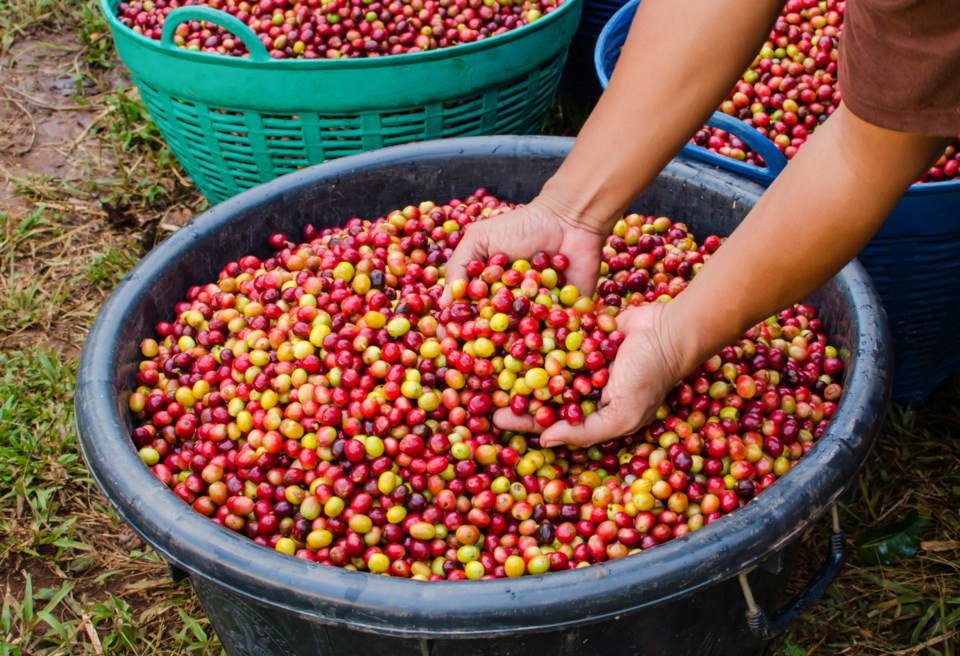I was at the store the other day just simply trying to get my grocery shopping done, when all of a sudden I was hit with over a million choices. I had to make sure I wasn’t being misled by greenwashed “health” claims, especially from so-called ethical companies that have sold-out to huge mega-corporations.
Burt’s Bees is now owned by Clorox, the Body Shop is owned by Nestlé, Kashi is owned by Kellogg’s, and your favorite natural juice Naked Juice? PepsiCo.
So after sifting through the misinformation and marketing, I thought to myself, “Do people ever stop to wonder why the heck bananas are so cheap when they come from so far away?” And then there is the whole quinoa controversy. Where the hell is all my food coming from? And is it the result of slavery in a country on the other side of the world?
Yes, grocery shopping is not simple anymore: it’s one moral and ethical dilemma after another. For me, it’s sometimes riddled with anxiety as I try to sift through the false advertisements and lies.
Now if you are like myself then you probably try to eat local, ethical, sustainable, and so on. But there are some things that that we can’t even tell how it’s getting to our plates. We’re being left in the dark about unethical labour laws and poor treatment of foreign farmers because we’re too concerned with looking to save a buck.
Remember how we were told that slavery ended in the 19th century? Well it didn’t! Modern day slavery is alive and well, folks, and it’s directly linked to where your food comes from. In fact, according to the International Labour Organization, around 21 million men, women and children around the world are bound by some form of slavery.
These days it can be hard to track how ethically the product that you are buying really is. Generally there is a long chain from the production of the item through the manufacturing to the final product. This gives us another reason to eat local and choose foods from ethical companies that are certified fair trade. Yes, it’s a bit more expensive, but you are literally making a political stance against slavery and slavery-like labour practices. Tell the world what you want by voting with your dollar.
What is “Fair Trade”?
Fair trade products must adhere to standardswhich include fair wages for workers as well as safe working conditions and fair prices paid for their products. When you purchase fair trade products, you are actively participating in reducing poverty, encouraging environmentally-friendly production methods and safeguarding humane working conditions. Employees that are on farms that are fair trade enjoy safe working conditions, actual sustainable wages and freedom of association.
So what can you do as a consumer and as a fellow human to help stop this cycle, or at the very least not support it? Educate yourself on where your food comes from, and look for the fair trade symbol on the products that you are purchasing, in particular, items like coffee, chocolate, palm oil, sugar and shrimp. Other options include growing your own food, buying local, and learning to make your own products.
Recipe:
Vegan fair trade butternut squash soup
· 2 tbsp fair trade coconut oil
· 1 onion, chopped
· 3 cloves garlic, chopped
· 1 celery stalk, chopped
· 1/4 cup minced ginger
· 1/4 cup chopped fresh cilantro
· 2 tsp ground coriander seeds
· 1 tsp ground cumin
· 1/2 tsp sea salt
· 1/2 tsp cracked pepper
· 1/4 tsp grated lemon rind
· 1/2 tsp turmeric
· 1/4 tsp chopped hot pepper (jalapeno is great)
· 8 cups peeled and cubed, peeled butternut squashes (about 3 pounds)
· 1 tomato, chopped
· 4 cups vegetable stock
· 1 can (400 mL) fair trade coconut milk
· Chopped fresh parsley
Directions:
1. In large heavy saucepan or Dutch oven, heat oil over medium heat; cook onions, celery, ginger, fresh and ground coriander, cumin, salt, pepper, lemon rind, turmeric and hot peppers, onions are softened, up to 10 minutes.
2. Stir in squash and tomato; pour in stock and bring to boil. Reduce heat to low; cover and simmer until squash is tender, about 20-30 minutes.
3. In blender or food processor, puree soup, in batches, until smooth. Return to clean saucepan; reheat until steaming. Stir in coconut milk and garlic; heat through. Serve sprinkled with fresh parsley.



